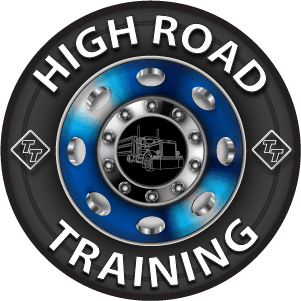Note: Your are not logged in. We can not keep your scores or track your progress unless you Register and Log In
Who Enforces Hos Regulations?
Law Enforcement:
Generally, DOT officers are the ones who enforce HOS rules, although any police officer may inspect a driver’s electronic logs. Individual states maintain weigh stations where they pull drivers in for random vehicle and logbook inspections. Police officers and DOT officers may also pull drivers over for random vehicle checks and log inspections.
Though it won’t happen often, chances are they will check your electronic logs every now and then.
Your ELD will have a “roadside inspection” status that you use when the officer is doing his inspection. This will allow the officer easy access to your logs without having to dig around too much.
Your ELD can also email or fax your logs to the officer or the weigh station. Some drivers regularly email their logs to themselves so they have a permanent record of their logs should they need them.
You must be familiar with your device and its functions. Part of the driver’s responsibility is to know how to present his logs for inspection. The driver must also have a set of instructions for the particular ELD on board the truck called a “Cab Card.”
During an inspection, it is likely the officer will ask to see the instructions. Be prepared! Make sure you understand your ELD and how it functions. You must be ready for a random inspection at all times!
Carriers:
In addition to the laws created by the FMCSA, most carriers have their own company policies regarding electronic logs. Not only do carriers want to ensure their drivers are safe on the roadways, but carriers often receive audits from DOT officials and face heavy fines if too many drivers have violations on their logs.
Internal auditors frequently review a driver's logbook for discrepancies or violations. A driver with too many logbook violations may receive a warning, discipline, or termination. Terminating a driver usually only occurs after several violations. The requirements for using electronic logging devices have forced carriers to crack down hard on HOS violations.
With the advent of ELDs, today’s drivers are monitored closely. Most dispatchers will know immediately when one of their drivers has violated the HOS rules. The current push within the industry for safety and compliance has limited the number of HOS violations allowed.
Circumstances may arise that cause a driver to violate one or more logbook rules. Proper trip planning and execution of those plans will help drivers produce clean and compliant logs without excessive patterns of abuse.
Drivers who cannot keep their logs clean in today’s strict regulatory atmosphere will soon find themselves out of work. ELDs are here to stay. Drivers must understand these regulations to remain both compliant and productive.
Multiple-Choice Questions:
Who enforces logbook regulations?
- Your employer
- Police officers
- DOT officials
- All these are correct
Generally, DOT officers are the ones who enforce HOS rules, although any police officer may inspect a driver’s electronic logs.
In addition to the laws created by the FMCSA, most carriers have their own company policies regarding electronic logs. Not only do carriers want to ensure their drivers are safe on the roadways, but carriers often receive audits from DOT officials and face heavy fines if too many drivers have violations on their logs. Internal auditors frequently review a driver's logbook for discrepancies or violations.
Who is allowed to inspect a driver's logbook?
- DOT officers at a traffic stop
- DOT officers or police officers at a weight station
- Police officers at a traffic stop
- All these are correct
A driver must have a set of instructions for their particular Electronic Logging Device called a:
- Inspection Card
- DOT Card
- Logging Card
- Cab Card
Circumstances may arise that cause a driver to violate one or more logbook rules. What is the best way to avoid those circumstances?
- Sending preliminary log entries to the state
- Avoid highly congested areas during rush hour
- Proper trip planning and execution of those plans
- Using a paper logbook instead of an electronic logbook
A driver with too many logbook violations may receive what type of punishment from their company?
- Disciplinary action
- All these are correct
- Termination
- A warning
Complete!
You can Return To The Table Of Contents







 TT On Facebook
TT On Facebook